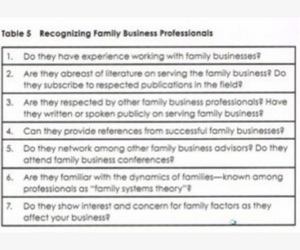Headaches and Hormones
Most Headaches Seen By Primary Care Physicians Are Migraines
Ninety percent of patients who see their Primary Care Physician (PCP) for a headache are there because of a migraine headache. Further, almost 30% of patients in a PCP’s waiting room are there because of migraines, even though half of patients with migraine are undiagnosed. The fact is, 27.9 million Americans experience migraines, and women get them between 3 and 4 times as often as men do.
Migraines Have many Underlying Causes
The pain of migraine occurs when brain cells trigger the trigeminal nerve, which then releases irritating chemicals that cause blood vessels on the surface of the brain to swell. These swollen blood vessels send pain signals to the brainstem, an area of the brain that processes pain information. The person with an inherited lower threshold for trigeminal nerve activation may get a migraine from many possible causes, including such factors as: disrupted sleep, hormonal swings, missed meals, dietary triggers, barometric pressure changes, stress, lights, and odors. Her migraines may also be maintained from overuse of her acute medications.
In Treating Migraine, Begin With A History
First, determine if your patient’s headache is a migraine. To classify as a migraine, the headache must include two of the following:
1. Unilateral
2. Pulsating
3. Moderate to severe pain
4. Aggravation by movement
Plus either:
1. Nausea &/or vomiting
2. Photophobia & phonophobia
Next determine if her headaches are episodic or chronic. Migraines are episodic if your patient has 14 or fewer headache days per month. However, if she experiences headaches on more than 14 days per month, and 8 would reach criteria for migraine, her migraines are chronic. If her migraines are chronic, your immediate therapy goal is to address the causes that are making the migraines chronic. Often these causes are non-restorative sleep and medication overuse. Both are treatable.
By the way, many women have had migraines for so long that an individual may not fully understand what you mean when you ask about pain-free days. There may be low-level background pain that she takes for granted. To help with communication, I tell her, “A pain-free day means you are no more aware of your neck, face, or head than you are of your middle left toe.”
Help Your patient Get Off The Cycle Of Medication – Caused Migraines
If your patient is routinely treating more than two days a week, she has likely developed medication-overuse headaches (MOH), the secondary headache disorder that develops as a consequence of regular overuse of acute headache medication for more than 3 months.
To help break the rebound cycle, she’ll need to cut back sharply on their use. This will be an uncomfortable time for her. One short-term strategy is to have her mix up the medications she uses. She might initially try interspersing triptan use (limited to 2 days a week) with another 2 days a week of a potent NSAID.
Hormonal Migraines Can Be Successfully Treated
The menstrual drop in estradiol levels triggers hormonal migraines. Menstrual-related migraine (MRM) occurs in a 5-day window. This window spans from 2 days before the onset of menstruation through the third day of bleeding. Knowing that the trigger is the luteal phase drop in estrogen, therapy consists of either eliminating that drop or minimizing it to a 10g EE decline or less. This can be accomplished with extended-cycle dosing of her combined hormonal contraceptive or with only a couple of the newer contraceptive options. Most combined hormonal contraceptives will either intensify MRM or leave it unchanged; only a very few will prevent it.
Search Articles
Latest Articles
An Explosive Choice: Landmines and Ukraine
https://cepa.org/article/an-explosive-choice-landmines-and-ukraine/ Publication –cepa.org
Dancing Warriors: How Russia’s Propaganda is Impacting Professional Stages
https://foreignpress.org/journalism-resources/dancing-warriors-how-russias-propaganda-is-impacting-professional-stages Publication –foreignpress.org
Taking the Panic Out of Panic Attacks—With Technology
https://foreignpress.org/journalism-resources/taking-the-panic-out-of-panic-attackswith-technology Publication –foreignpress.org
An Evening Dedicated to Mental Health and Recovery in War-Torn Ukraine
https://foreignpress.org/journalism-resources/an-evening-dedicated-to-mental-health-and-recovery-in-war-torn-ukraine Publication –foreignpress.org
Subscribe to Updates
About Author

Mitzi Perdue is the widow of the poultry magnate, Frank Perdue. She’s the author of How To Make Your Family Business Last and 52 Tips to Combat Human Trafficking. Contact her at www.MitziPerdue.com
All Articles
Choosing Your Family Business Advisors
Choosing Your Family Business AdvisorsKnow when you need to get help. People often ask me the secret of Frank Perdue’s success. He had to do hundreds of things right. He had to be able to see the big picture as well as be detail oriented. But there was something else:...
Substance Abuse and the Family Business
Substance Abuse and the Family Business When it comes to substance abuse, members of a family business are no more immune than the rest of the population. However, as family business advisor Loyd Rawls points out, the consequences can be more dire because serious...
Infertility: Advances In Treatment
Infertility: Advances In TreatmentAge and Infertility are Linked Infertility affects roughly 12% of women. By the time a woman is in her early 40s, her chance of infertility rises to 20%. It’s a particularly difficult problem for the older woman because the quality...
Career Advice for Young People: Shut Up and Listen!
Career Advice for Young People: Shut Up and Listen! Jack Tatem, a former Perdue Vice President, has some serious advice for young people. It’s simple and it can make a big difference in your career. It has to do with listening. The advice is, “Shut up and listen!” He...
Embedding The Family’s Values by Creating an Ethical Will
Embedding The Family’s Values by Creating an Ethical WillOriginal Article written by Mitzi can be found here. Much as I admired Frank Perdue for his success with his family poultry business, I admired him even more for his success as a family man. Since the happiness...
6-Step Solution to Almost Any Problem
6-Step Solution to Almost Any Problem 1. Describe the Problem. Preferably do this in writing. The act of putting the problem into words can clarify your thinking. 2. Write Down the Obstacles. Although I’m a fan of positive thinking, I’m also a fan of research...





